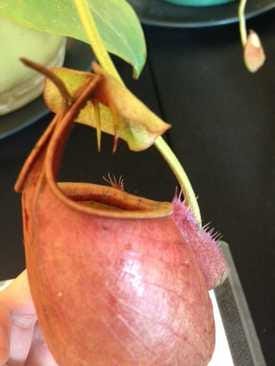GROWING LOWLAND NEPENTHES
The most common lowland Nepenthes species in cultivation are the likes of N. ampullaria, N. mirabilis, and N. rafflesiana. N. ampullaria, along with N. bicalcarata, N. campanulata, and N. northiana, are usually considered the "poster boys" of lowlanders (despite the relative rarity of the latter two) and are usually the most recognizable. Lowland Nepenthes require very warm to hot daytime temperatures (think 85-100F) and warmish nights (around 70-75F) in order to thrive, although these numbers vary by species. The cultivation difficulty of lowlanders also varies; usually N. mirabilis and N. rafflesiana are said to be easier growers while growers report difficulty with species like N. campanulata and N. northiana (both of which grow in alkaline limestone substrate). Generally, it seems that lowlanders tend to have thin and papery leaves and therefore cannot be adjusted to lower humidity like some intermediate species can.
Neither of us have any particularly significant experience with lowland Nepenthes so we'll end this section here.


